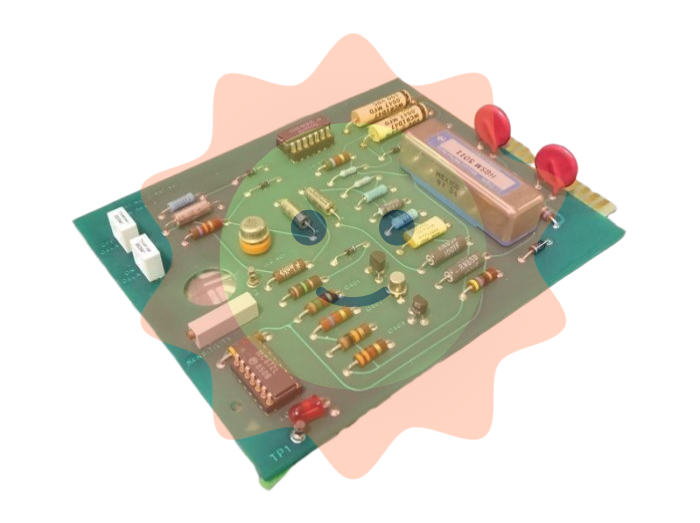Key points and policy suggestions for building a modern infrastructure system
I. Key points for the construction of a modern infrastructure system
The modern infrastructure system consists of two aspects, one is the traditional infrastructure represented by transportation, energy, water conservancy, and electricity, and the other is the new infrastructure represented by 5G, data centers, and artificial intelligence. Modern infrastructure construction should deal with the "new" and "old" infrastructure as a whole, and coordinate the short-term and long-term goals of infrastructure construction.
First, the planning and construction of the modern infrastructure system should be based on the long-term, and the short-term tendency of infrastructure investment to stimulate economic growth should be prevented from reducing the effectiveness of the modern infrastructure system. Infrastructure investment is an important means for the government to regulate the economy countercyclical, and all countries have a tradition of stimulating the economy through infrastructure investment. In the context of increasing downward economic pressure, local governments have significantly increased investment in infrastructure construction projects, and the policy motivation to stimulate short-term economic growth through infrastructure investment has significantly increased. In the modern infrastructure system, the traditional infrastructure has the characteristics of mature investment mode and obvious short-term economic driving effect, which can satisfy the motivation of local governments to drive economic growth through infrastructure investment. However, the traditional infrastructure is relatively perfect, and the marginal investment return continues to decline. The new infrastructure investment model is not clear enough, the investment scale is relatively small, and the direct driving effect of investment on economic growth is relatively small, but the new infrastructure has an important strategic support role for the strengthening, improving and expanding of the digital economy, and the long-term economic and social value is huge. The construction of modern infrastructure system should not only focus on the short-term value of infrastructure construction, but also pay attention to the long-term value of infrastructure construction, coordinate the construction of traditional infrastructure and new infrastructure, and prevent the short-term goal of stimulating economic growth from impeding the long-term strategy of modern infrastructure system construction.

Second, in the construction of modern infrastructure systems, it is necessary to promote the coordinated construction of urban and rural areas and regions with higher quality, and prevent the emergence of a quality digital divide. The experience of infrastructure investment shows that proactive prevention of potential infrastructure gaps is an important prerequisite for improving construction efficiency and promoting inclusive development. The digital divide is the most important factor affecting inclusive development and improving people's well-being in the era of information technology and digitalization. Under the guidance of the "Broadband China" strategy of the Party Central Committee and The State Council, universal communication services in China have basically achieved full coverage, and the access-based digital divide caused by the difference in access opportunities of information and communication networks has basically been eliminated. However, with the in-depth development of the digital economy, the quality of network infrastructure and the ability to support new businesses have become important factors affecting the improvement of regional economy and people's livelihood, and become a new digital divide that needs to be prevented: On the one hand, high-quality digital infrastructure directly determines the level of digital transformation in different regions, and then affects the ability and level of different regions to seize digital opportunities and enjoy digital dividends; On the other hand, new digital applications such as distance education and telemedicine are an important starting point to solve the gap in regional education, medical and other public services under the background of digital economy, and these applications need the support of high-quality network infrastructure such as large bandwidth and low delay. If the digital divide of different regional quality cannot be closed, it is difficult to solve the problem of regional gap through new business forms and new models. Therefore, the construction of modern infrastructure system should focus on ensuring the quality of 5G, gigabit optical network and other infrastructure in rural, remote, poor, and ethnic areas, and create an "integrated" infrastructure system that integrates urban and rural areas, regional coordination, and consistent standards, so as to prevent potential quality digital divides.
Third, the construction of modern infrastructure systems should strengthen the supporting role of infrastructure in the incubation of new technologies, new industries and key core technologies. The experience of previous industrial revolutions shows that the competition of industrial revolution is first and foremost the competition of infrastructure supporting new industries and new technologies. At present, the world is in a critical period of accelerating the expansion of a new round of industrial revolution. The construction of a modern industrial system should not only enhance the coverage and coverage quality of new infrastructure such as 5G, artificial intelligence, and data centers, but also comprehensively consolidate the development soil of the digital economy and lay the foundation for the leading digital economy. It is also necessary to strengthen the traction role of modern infrastructure system on the incubation of key core technologies, and promote the incubation and cultivation of the underlying technologies of the digital economy through large-scale new infrastructure investment, so as to build the leading edge of core technologies in the digital economy era. At present, the strategic planning of China's infrastructure construction mainly focuses on solving the problem of domestic new infrastructure coverage, and the strategic deployment is insufficient in the two aspects of cultivating China's key technologies with unique technological advantages through new infrastructure and seizing the international new infrastructure market in a planned and step-by-step way, and there is a risk of strategic absence, which will inevitably weaken the strategic role of new infrastructure in supporting China's leading digital economy in the long run.

Fourth, the modernization of the infrastructure system should strengthen the construction of standards for interconnection between various types of infrastructure. Different from the "pipeline" characteristics of traditional infrastructure, the new infrastructure is a multi-level infrastructure system, and the interconnection between different infrastructures can give full play to the network efficiency and improve the use efficiency of the new infrastructure. However, the current level of connectivity between different infrastructures is low, reducing the efficiency of the use of new infrastructures. The reasons for this phenomenon are as follows: First, there is a lack of unified interface standards between various types of infrastructure, different technical routes, different industrial sectors, and different types of infrastructure are separated from each other, and it is impossible to realize efficient sharing of resources; The second reason is that the system and mechanism of data flow between departments, the policy guarantee of data resource classification management and application have not been established, and data flow and sharing are restricted. Third, local governments at all levels do not have sufficient understanding and capacity for the unified deployment of various types of infrastructure. Since the planning and deployment of communication network infrastructure (5G, Internet of Things, industrial Internet, satellite Internet), new technology infrastructure (artificial intelligence, cloud computing, blockchain), computing infrastructure (data centers, intelligent computing centers) are usually divided into different sectors, The inter-departmental coordination is easy to cause the interconnection of various new infrastructure and the implementation of unified planning and deployment are not good because of the lack of timely and inadequate coordination.
Second, high-quality policy suggestions to promote the construction of modern infrastructure system
First, scientifically define the strategic positioning of the government in the construction of modern infrastructure. In terms of traditional infrastructure such as transportation, energy and water conservancy, the government should play the role of the main investor. At the same time, it needs to actively attract the participation of private capital, and strike a balance between expanding investment and improving the quality and preventing government debt risks. In terms of 5G, gigabit optical networks, industrial Internet, artificial intelligence and other new information infrastructure, the government should give full play to the role of coordinator and policy provider, and stimulate the enthusiasm of social capital investment. Digital infrastructure such as artificial intelligence and big data has strong attributes of private goods, leading technologies and business models are not yet mature, and the development of industrial organization structure is still in a highly dynamic stage, which determines that the main investment body of digital infrastructure should be the market, and the role and policies of the government should focus on encouraging local governments and enterprises to explore diverse technology routes and business models. In the diversified competition, the leading technology, the leading business model and the advantageous enterprises are constantly promoted, and the investment incentive intensity is accelerated when the conditions are mature, and the micro-investment entities are encouraged to accelerate the investment pace and increase the investment scale.

Second, while strengthening the exploration of diverse technology routes for new infrastructure, in areas where technology routes are relatively mature and China has leading advantages, such as 5G, gigabit optical network, and industrial optical network, China will cultivate and enhance its unique technological advantages by guiding large-scale new infrastructure investment. On the one hand, the new infrastructure should strengthen the guiding role of the government to incubate and cultivate China's leading emerging technologies; On the other hand, in the context of unclear new infrastructure technology routes and immature business models, it is necessary to strengthen diversified route exploration and screen competitive technologies through market mechanisms. In the face of the contradiction between these two aspects, it is necessary to guide the development of China's advantageous technological routes through the government's new infrastructure in the fields where the current technology is relatively mature, such as 5G, gigabit optical network, and industrial optical network, and where China has certain technological advantages. For example, in 5G, it is necessary to accelerate the cultivation of China's closed 5G network with hardware and software integration, and compete with the ORAN open source technology route promoted by the United States and Europe; In terms of gigabit fixed network, it is necessary to compete with China's leading gigabit optical network technology route based on Cable technology route in the United States; In terms of industrial Internet, it is necessary to speed up the cultivation of China's advantageous flat industrial optical network technology route to compete and replace the dominant closed industrial Internet technology route in Europe and the United States. In areas such as artificial intelligence and blockchain that are still in the early stage of technological route exploration and where the competition of leading technological routes is not yet clear, the role of market mechanisms should be given full play, and state-owned enterprises and private enterprises should be encouraged to carry out diversified technological innovation and application through functional industrial policies such as research and development subsidies.
Third, accelerate the development of new infrastructure construction standards and data security standards. In order to improve user satisfaction with the new infrastructure experience and strengthen the incubation effect of new infrastructure on downstream applications, it is suggested to establish a "user" oriented new infrastructure construction standard system. For example, in terms of 5G and gigabit optical networks, it is necessary to break through the current coverage oriented network construction ideas, and build a network construction standard with user experience as the core. At the same time, it is necessary to promote the relevant departments to work together to solve the standard obstacles restricting the construction of new infrastructure, such as for the current reflection of the more prominent, restricting the FTTR business exploration and development of fiber optic wiring standards, to accelerate the promotion of the Ministry of Industry and Information Technology and the Ministry of housing cooperation, timely development of FTTR indoor fiber wiring national standards. In addition, it is necessary to establish a standard system for data circulation and application to improve the efficiency of data utilization. It is suggested to establish a modern infrastructure construction team, establish a close work connection mechanism among various departments, and effectively solve the problem of departmental coordination. According to the principle of "network ubiquitous", the construction standards and data security standards of various facilities such as transportation, energy and cities should be integrated and deployed around network infrastructure, and the network standards and technical interfaces of various infrastructure should be prospectively unified. Effectively establish the network effect of China's new infrastructure and the ecological advantages of the digital economy.
- EMERSON
- Honeywell
- CTI
- Rolls-Royce
- General Electric
- Woodward
- Yaskawa
- xYCOM
- Motorola
- Siemens
- Rockwell
- ABB
- B&R
- HIMA
- Construction site
- electricity
- Automobile market
- PLC
- DCS
- Motor drivers
- VSD
- Implications
- cement
- CO2
- CEM
- methane
- Artificial intelligence
- Titanic
- Solar energy
- Hydrogen fuel cell
- Hydrogen and fuel cells
- Hydrogen and oxygen fuel cells
- tyre
- Chemical fiber
- dynamo
- corpuscle
- Pulp and paper
- printing
- fossil
- FANUC
- Food and beverage
- Life science
- Sewage treatment
- Personal care
- electricity
- boats
- infrastructure
- Automobile industry
- metallurgy
- Nuclear power generation
- Geothermal power generation
- Water and wastewater
- Infrastructure construction
- Mine hazard
- steel
- papermaking
- Natural gas industry
- Infrastructure construction
- Power and energy
- Rubber and plastic
- Renewable energy
- pharmacy
- mining
- Plastic industry
- Schneider
- Kongsberg
- NI
- Wind energy
- International petroleum
- International new energy network
- gas
- WATLOW
- ProSoft
- SEW
- wind
- ADVANCED
- Reliance
- YOKOGAWA
- TRICONEX
- FOXBORO
- METSO
- MAN
- Advantest
- ADVANCED
- ALSTOM
- Control Wave
- AB
- AMAT
- STUDER
- KONGSBERG
- MOTOROLA
- DANAHER MOTION
- Bentley
- Galil
- EATON
- MOLEX
- Triconex
- DEIF
- B&W


email:1583694102@qq.com
wang@kongjiangauto.com

















































